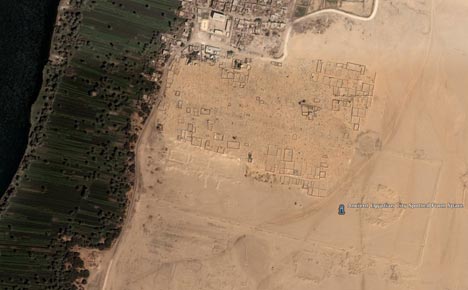A LiveScience article relates how satellite imagery is being used in Egypt to find promising new sites to excavate. Egyptology Blog locates one place mentioned in the article (here it is in Google Maps) — a settlement from 400 AD on top of a much older temple dedicated to Akhenaten, the pharaoh who came up with monotheism and moved his capital to modern-day Amarna, just to the north of the site.

Turn on the National Geographic layer in Google Earth to see links to an article from 2001 about the region. And if you turn on the Google Earth Community layer — an unparalleled repository of raw geographical annotation — you’l find this link to an overlay of the region.
(I’m pretty sure that the settlement featured in the article was already discovered and excavated, so this is not a case of looking at Google’s own Digital Globe imagery and going “what, you didn’t know that was there??” But it certainly takes an archaeologist familiar with the region to know what’s been documented and what hasn’t.)
One thing is certain: These “tells” aren’t time sensitive, so the sudden abundance of cheap high resolution imagery, even if it’s 18 months old, has made satellite-based archaeological discovery much cheaper and accessible.
Previous articles in this vein:
Google helps discover Roman villa
Archaeologists dig Google Earth
Google Earth craterfest: New craters look promising